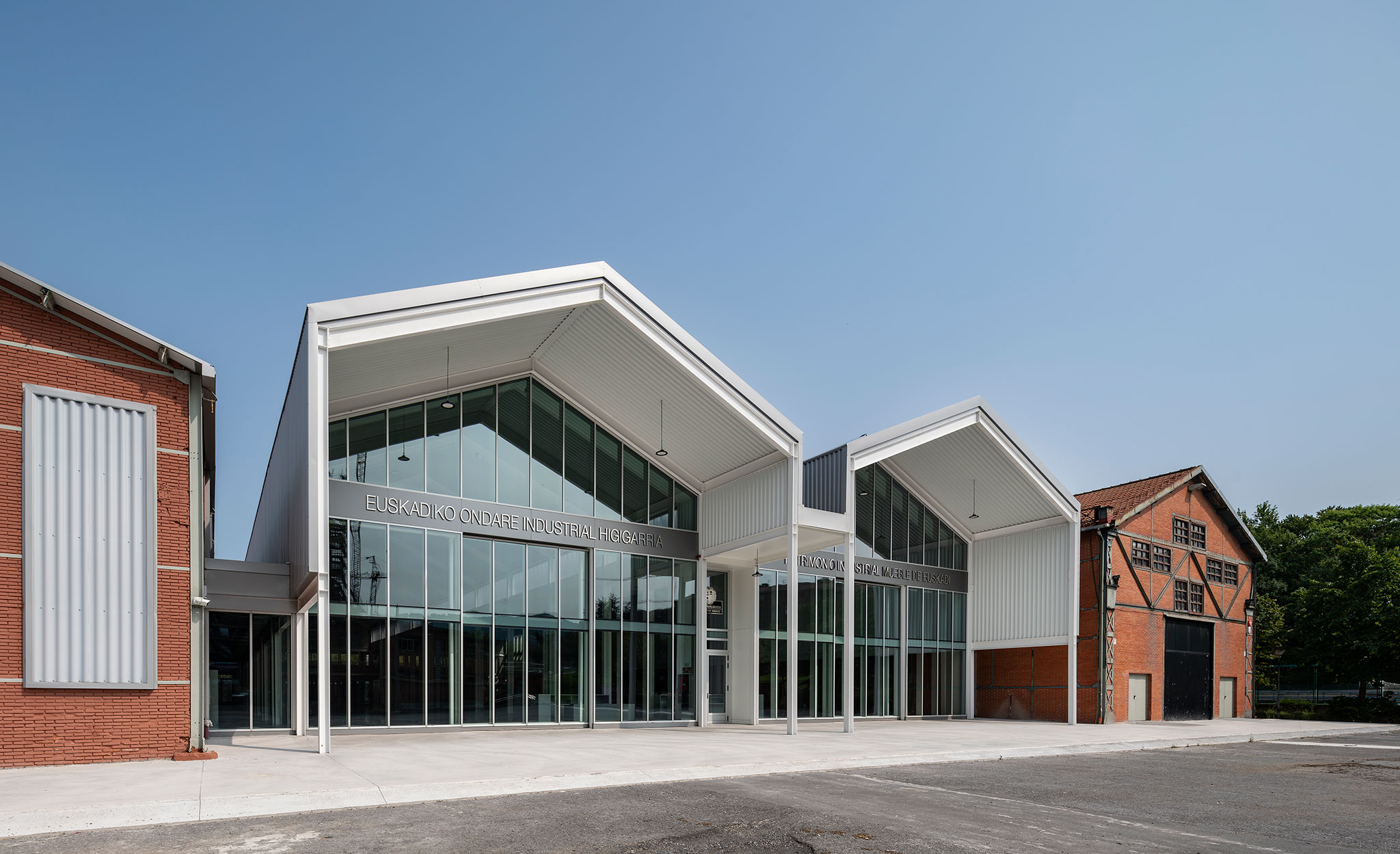
The new warehouse, which can be visited in the old Orconera facilities, developed by Garitano Arquitectura, is characterised by its industrial warehouse typology. The project is organised by linking two parallel warehouses, built with gabled roofs. The programme responds to a series of spaces that facilitate exhibition, storage and a lobby, acting as a link and connection with the two pre-existing warehouses.
Constructively, the project was carried out with a steel structure and sandwich panel roofs made of sheet steel, which follows a materiality in keeping with the characteristic industrial language of the area. One of the most notable elements of the warehouse is the large glass main façade made with a curtain wall system.

Visitable warehouse of Basque Country's industrial heritage by Garitano Arquitectura. Photograph by Jose Manuel Cutillas.
Project description by Garitano Arquitectura
The new Visitable Warehouse for pieces of industrial movable heritage from the Basque Country responds to the need for a new exhibition space between two old rolling stock maintenance warehouses that belonged to the mining company Orconera Iron Ore Company, which have been used as storage and exhibition spaces for industrial pieces.
The new construction fully respects the pre-existing constructions. The project is organised into two parallel warehouses, of a similar height to that of the old pavilions, with two main gabled roofs and three longitudinal flat roofs interspersed, which outline volumes similar to the existing ones. This simple mechanism of typological repetition provides the volumetric unity between the old and new constructions, and the scale of the whole necessary to cope with its fit in a low-skilled urban context, also evoking forms deeply rooted in the field of industrial construction.

The new Visitable Warehouse, in addition to carrying out its own function, acts as a vestibule space for the set of exhibition spaces, providing direct access to the existing warehouses.
The interior space is open and continuous. The side facades of the old pavilions, which show their original construction systems, are integrated into the interior of the new Warehouse.
The new structural supports are laterally separated from the old pavilions, and allow a clear reading of the intervention. The central supports define an axis of access, circulation and interior organization.

A fully glazed front facade and a deep protective porch, which is actually an exterior extension of the warehouses, characterize the building as a public facility and make it the focal point of a future front public plaza to be built on the site.
Two large sliding doors, integrated into the enclosures of the main facade, allow access to large pieces.
At the back of the warehouses there is an interior volume with two mezzanines: on the ground floor, exhibition spaces for small pieces; on the upper floor, administrative and meeting spaces; on the ground floor under the roof, facilities.

The building is built with a deliberately industrial language. However, unlike a strictly factory-built building, whose construction logic would have certainly led to an optimisation of its structure by covering the space with a single span, here considerations that are not strictly functional, of context, scale and internal spatial articulation, have prevailed, which have determined the architecture: volumetric adaptation to the pre-existing complex; public scale in its relationship with the exterior, in the large gesture of the façade and the porch; internal articulation of the space through structural supports and the shape of the roofs; introduction of natural light in the centre of the warehouses.
The construction of the project is based on a structure of screwed steel profiles; roofs of sandwich panels made of sheet steel. The warehouses have two types of façade. One type of “in situ” sandwich panel façade and another type of glazed façade with aluminium profiles, a curtain-wall system. The windows in the project are made of aluminium carpentry, the interior false ceilings are made of perforated corrugated sheet steel, the walls and interior divisions are made of laminated plasterboard and the floors are made of polished concrete slabs.






























































